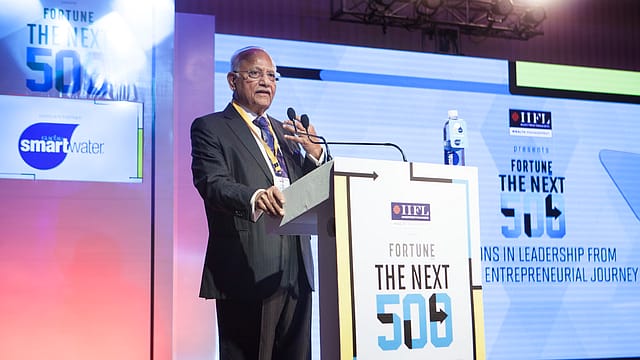India can be top global healthcare destination: Apollo chairman
ADVERTISEMENT

India is already among the most popular destinations for medical tourists across the globe, given its high quality facilities at relatively cheaper costs when compared to other developed nations. But, Dr Prathap C. Reddy, founder and chairman of Apollo Hospitals, is of the view that India has the scope to become the number one healthcare destination globally.
Speaking at the Fortune India Next 500 annual summit on Friday, Reddy said a “Heal in India” campaign must be started and widely publicised in order to realise the country’s potential.
“There is a scope for India to become the global healthcare destination. We have built the highest standards of facilities here and offer treatment at a fraction of the cost [when compared to countries like the U.S.],” he said, adding that a “Heal in India” campaign where the industry is encouraged to combine India’s ancient and traditional knowledge of healing and the latest knowhow and facilities can take the country to the top.
January 2026
Netflix, which has been in India for a decade, has successfully struck a balance between high-class premium content and pricing that attracts a range of customers. Find out how the U.S. streaming giant evolved in India, plus an exclusive interview with CEO Ted Sarandos. Also read about the Best Investments for 2026, and how rising growth and easing inflation will come in handy for finance minister Nirmala Sitharaman as she prepares Budget 2026.
According to K.J. Alphons, minister of state for tourism, the total number of medical tourists who visited India in 2017 was 495,000. In 2015, 234,000 medical tourists had visited India, showing that the number has more than doubled in just two years.
In December 2017, Alphons has told the Lok Sabha that the medical tourism industry in India was pegged at $3 billion in 2015 and could become a $9 billion market by 2020. Some reports estimate that with such a figure, India would have garnered around 20% of the global market share.
Reddy said by using innovations in technology, the cost of healthcare in India could be brought down further, making it an even more attractive destination for medical tourists.
He also stressed on the need to make high quality healthcare available to all Indians, emphasising on the need for more innovations such as telemedicine which will increase the reach of the healthcare industry to remote regions.
“We have state-of-the-art hospitals, but we need to reach a larger cross section of people. This is where technology comes in,” he said, adding that through telemedicine, the group’s hospitals are connected to several countries, enabling doctors to take advice from specialists abroad.
“We have 14 telemedicine centres in Himachal Pradesh, situated even at heights of over 14,000 feet which are connected to our hospitals. Even when the region is snowed down, these centres have managed to save lives,” he said.
However, he urged the representatives of the industry, the top midsize companies of India present at the event, to focus on boosting the development of technology that will help healthcare reach more people. One immediate barrier for telemedicine is language and dialect, Reddy said, stressing on the need to develop solutions for such problems.
Reddy went on the say that India will soon face a “tsunami of non-communicable diseases” which will claim the lives of many young Indians. “We are close to becoming the diabetes capital of the world; we already are the heart [disease] capital of the world. I don’t want these titles for India,” he said.
“The World Economic Forum said the world will lose $30 trillion by 2030 in the treatment of non-communicable diseases… India’s burden will be $5.4 trillion, which will be around 54% of our GDP then… We cannot afford to lose the money and most importantly, we cannot afford to lose young, dynamic people to such diseases,” Reddy said.
He then urged every member in the audience to take a pledge to stay healthy and take steps to prevent and control conditions like diabetes, cancer, and heart disease.
“Look after yourself, look after your families,” he said. “By doing this we can make a significant difference; we can make India a healthy nation.”
